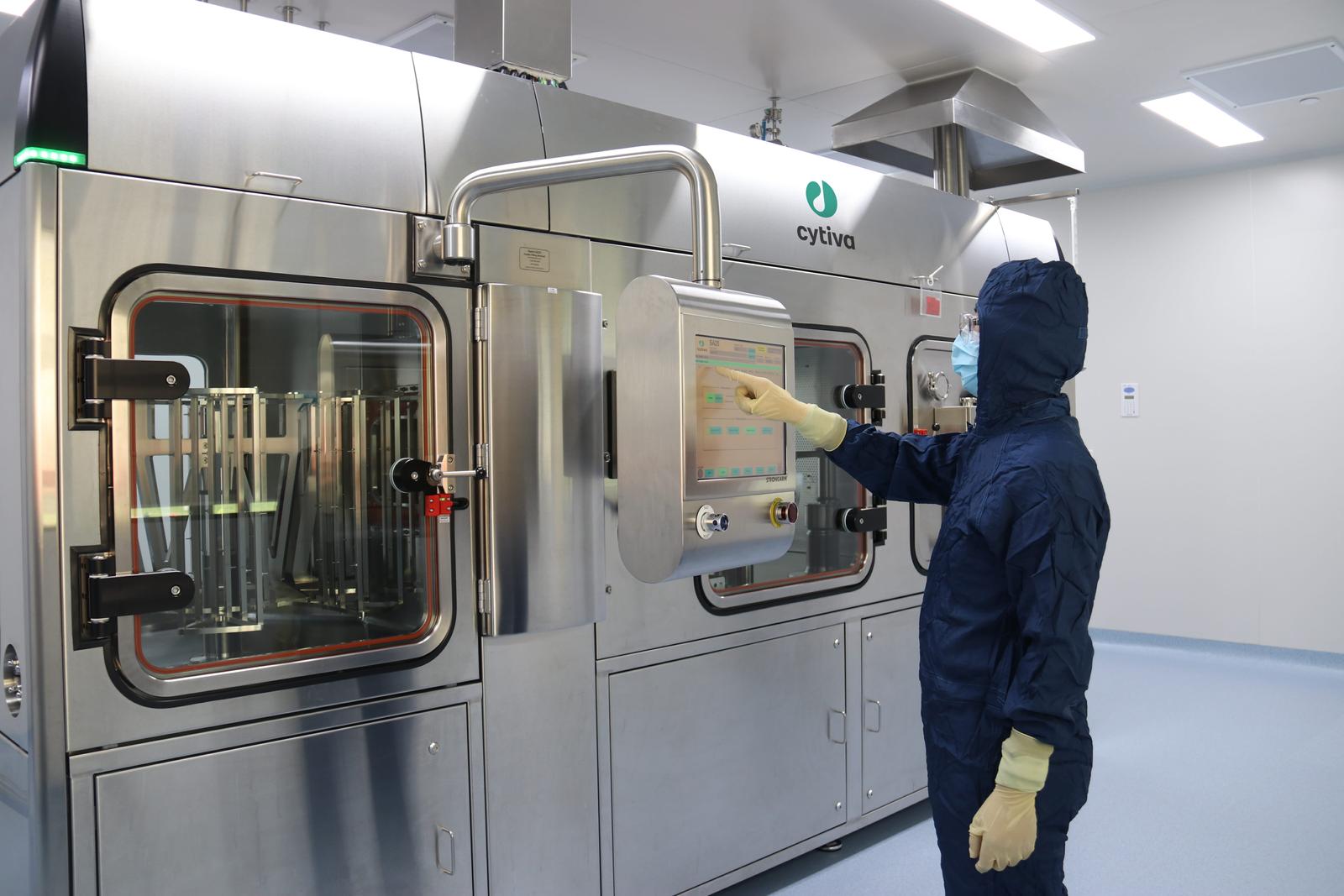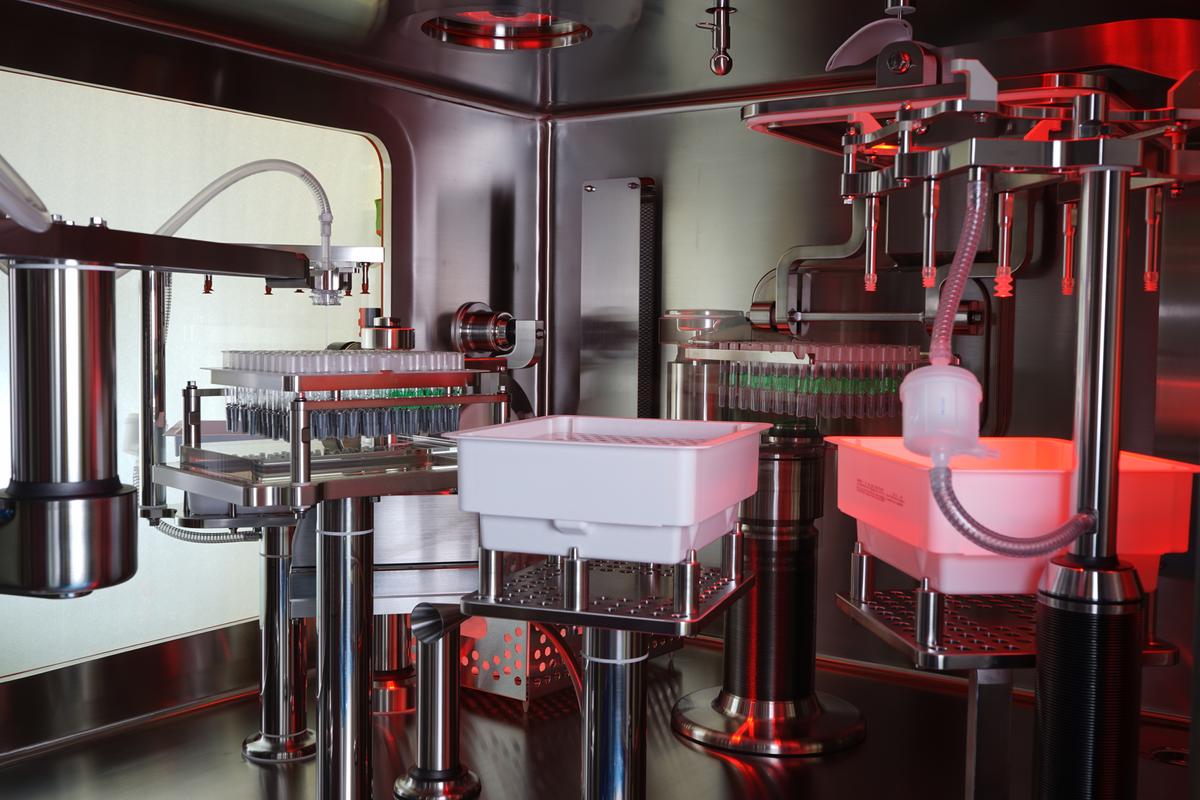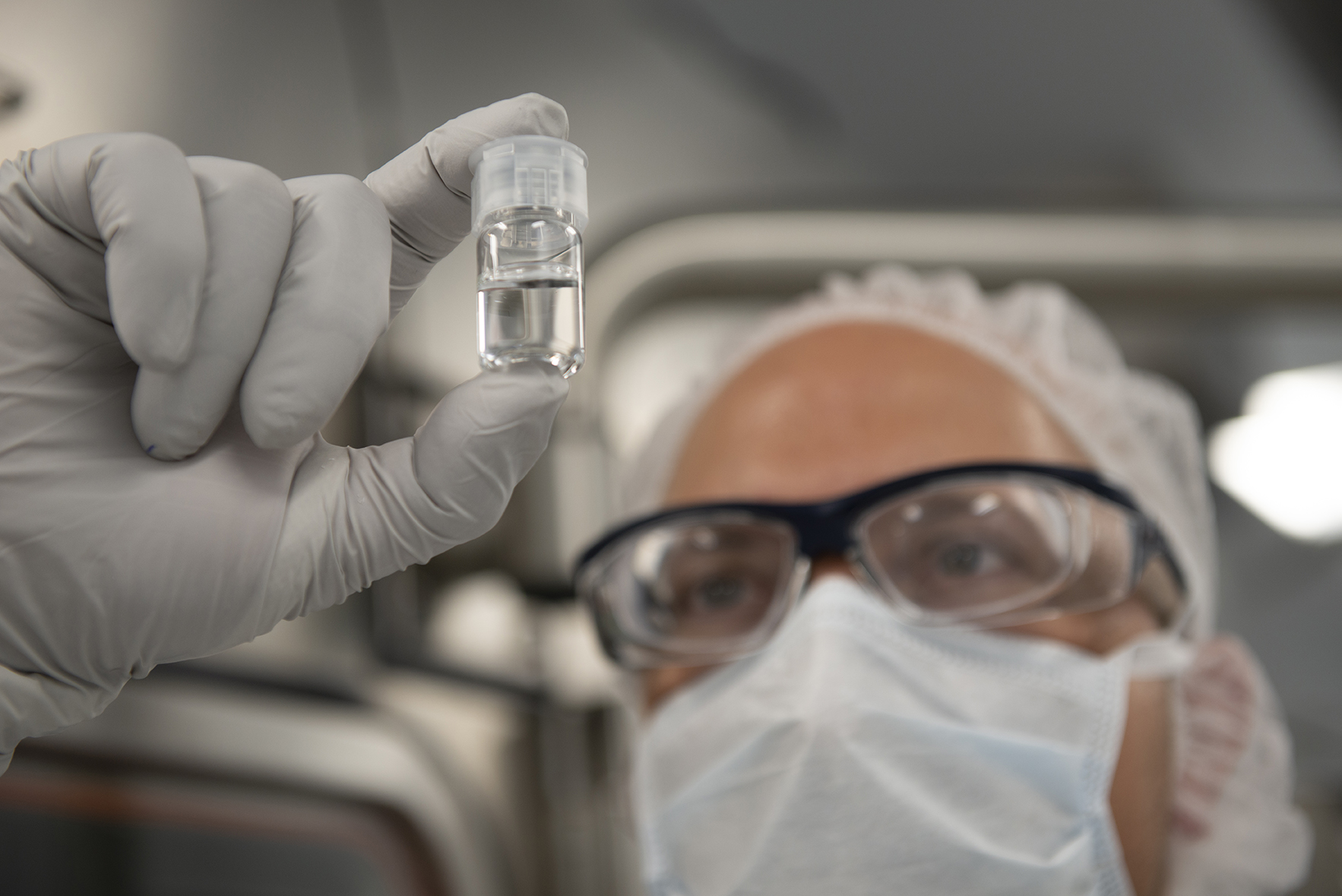Aseptic filling is the final manufacturing step, but it shouldn’t be an afterthought. It’s time to adopt closed, automated processes for the drugs of today and tomorrow.
Hands off the goods: modern aseptic filling for therapeutics
A column by Chris Procyshyn was featured in the March 2020 issue of The Medicine Maker. Chris discusses the importance of changing aseptic processing to include closed automated processes in order to deliver new life-changing therapies to patients.
Back in 2000, while I was working at QLT, a problem became evident: the lack of process equipment suited for the job at hand.
QLT was partnered with Novartis at the time. One of our biggest products was Visudyne (verteporfin), but we were also making a host of other clinical products – many of which were very targeted and involved small batch sizes, which has become a major trend today. The production equipment, however, was tailored for the blockbuster era and large-scale manufacturing; after all, most injectable drugs, at the time, were mass manufactured in quantities of tens of millions. To address the problem, QLT built a pilot manufacturing facility. For me, it really showcased how much room there was for innovation in terms of manufacturing optimization. In particular, I saw huge potential for improving aseptic filling, which was largely ignored as other changes to manufacturing were made.
Sterile filling is the last part of the manufacturing equation – and often it is an afterthought as all the challenges of producing a new molecule have taken all the time, risk, and effort contingency that the company allotted. Even if companies invest in updating their manufacturing processes, they will often still use the same, antiquated manual methods for filling that they have been using for decades. When I started out in the pharma industry, filling was an open process conducted manually in open cleanrooms. I wish I could say this was not the case anymore, but there are still countless companies that perform filling in this way. Many of us have been in the situation where a product is delayed because we cannot figure out the source of contamination – and often it stems from something as simple as an operator scratching their head at the wrong time. Some people in industry will also tell you that reject rates may go up (or down) when certain people are on vacation…
Automated systems for filling operations do exist, but often they are not suited for today’s smaller batches and the need for flexibility, such as being able to fill different containers (vials, syringes, or cartridges) on the same machine without lengthy downtime.
I talked about the issue a great deal with one of my co-workers at the time, Ross Gold. And in 2007, we left our jobs in biopharma with the aim of designing a new form of aseptic processing equipment. We wanted to make new, optimized, and automated systems for this field that did away with manual filling, and that were designed to cope with smaller batch sizes and frequent changeovers. In other words, we wanted to design equipment that would be fit for the future.
The end result was the founding of our company (Vanrx), which was acquired by Cytiva in 2021.
One of our automated systems is shown in Figure 1.
Fig 1.. One of our automated systems designed for smaller batch sizes and frequent changeovers: the SA25 Aseptic Filling Workcell.
Learning to become machine makers
Ross and I had been involved in many projects involving the purchase and installation of new equipment. After all the frustration from that, we felt a sense of responsibility to find a way to get the industry to use technology to lower risk and deliver more. The first thing we realized was that pharma is not the only regulated industry delivering critical clean technologies to the world. Semiconductor wafer clean processes can run for 30 days or more in continuous production using work cells. The wafer is passed from machine to machine within something called a FOUP, a front opening unified pod, and the wafer never sees human intervention throughout its whole production process. In other words, it’s a completely closed process. As a result, you have clean conditions, high productivity, and great quality. These work cells are standard machines – you do not scale up by making a faster machine; you scale out by adding more machines. A semiconductor facility is full of the same systems duplicated over and over in rows to increase production. If more production is required, the semiconductor company builds a new warehouse and adds more work cells.
Could this be applied to pharma? Ross and I spent a while trying to figure this out and eventually centered on the development of robotic, gloveless isolator systems that could be used as aseptic filling work cells. Gloveless means there is no human interaction at all, but to do this we couldn’t just take a normal isolator design and remove the glove – we had to completely redesign the filling process. And that’s the crux of the issue when it comes to automation – you need to design a system and process that is robust enough to not require human intervention (Fig. 2).
Fig 2.. Fully robotic manual handling and filling of nested syringes inside a closed, gloveless isolator. The aseptic process has been completely redesigned to remove all human intervention.
It was also important for us to develop systems that were standardized, reproducible, and predictable. In the highly efficient aviation industry, everything is standardized, certified, and produced in mass to bring down costs and improve transferability. In pharma, most systems are custom one-offs and, therefore, very expensive. In addition, not all vendors really understand the customer’s process requirements. An equipment vendor will ask, “What do you want us to build?” If you are an aseptic processing expert, your experience could lie in regulatory and quality, but you probably will not have designed machines before. Do you really know what you want or the questions you should be asking? And if you forget something it could mean big trouble for your budget. It’s like building a house. You may know what house you want, but you are unlikely to know how a house is built and may end up forgetting something obvious. Is this your fault? Or the fault of the builder who didn’t understand your needs? Either way, the end result is an unsatisfactory experience and an unoptimized (and expensive) system.
Earlier, I described the problem of manual process and operator variability. At a conference, I remember hearing many companies complaining about inadequate operators. I pointed out that there are also a lot of smart operators out there making up for badly engineered processes…
Buying a car, on the other hand, tends to be an easy process. You sit in the car; you try the car, and you look at the price. If that’s all good, you buy the car. And what you receive will be identical to the car you viewed. Would it not be great if buying pharma processing equipment was the same? Imagine a standard filling system flexible enough to suit a variety of requirements, and that can be built, installed, and validated in less than a year. Equipment like that is where the future of the industry lies.
With standardization, you can see the performance before you buy, and know that the machine you purchase will be the same (just like that car). And that helped us to get our company off the ground – we were not the only folks who had realized that something had to change in the industry, and many companies told us they were desperate for new aseptic processing technology. However, pharma is still reluctant to change – particularly when it comes to aseptic filling. Many companies also told us that, as regulators didn’t have an issue with their current processes, they were not going to change them. But then came shutdown after shutdown by FDA because of problems at aseptic filling facilities. It turned out regulators did have an issue, but the scale of the problem threatened to seriously impact the health system with the full extent of enforcement; agencies were concerned that without viable alternatives, they could not leave patients without the drugs they needed.
It was frustrating because change is not out of character for pharma. On the research side, if you have a new molecule – a molecule like no other molecule – the seas will part, and an enormous amount of effort will go into designing the right processes for that molecule.
It can be difficult to propose new regulations to force a dramatic shift away from manual processes, when so many companies perform aseptic filling in the same manual way – and it could lead to temporary production delays or shortages. But regulators will tell you that it is heartbreaking to see a revolutionary new medicine made with cutting-edge technology being filled by someone with gloves. Not only are a lot of biopharmaceuticals filled this way, but so are some cell and gene therapies –groundbreaking therapies of our day. More and more cell and gene therapies are entering clinical development – and, one day, processing these therapies will become the norm. But we must do better than filling them with gloves (Fig 3).
Fig 3.. With more and more ground-breaking therapies entering clinical development, our aseptic filling technology needs to keep up.
Facing the future
There are times when I miss the drug development aspect of the industry, particularly the challenges and complexities involved. But I also feel that I need to do my part to fix some of the issues. And aseptic processing is long overdue for innovation. Drug shortages are a huge problem – and many of these issues come from aseptic processes (particularly processes performed manually). I’ve spoken to clinicians, who tell me how difficult it is for them to tell patients that they won’t get access to a much-needed drug. A medical oncologist at a university told me that her students see drug shortages as “normal.” It makes her so angry; she wishes she could take manufacturing people and force them to confront the patients who are affected.
Deep down, we all know what needs to change. We should not just sit back and wait for someone else to enact or enforce change. We should all consider how we can help improve our industry.
Last Updated: July 15, 2022


